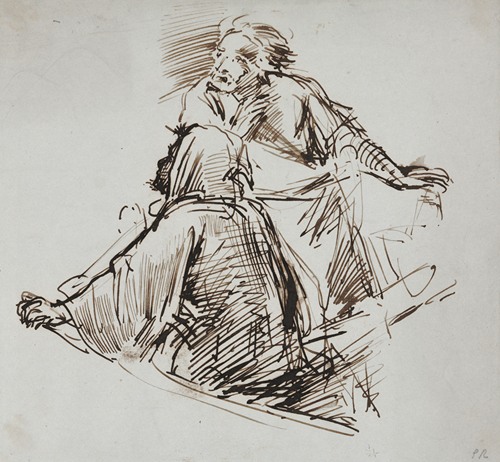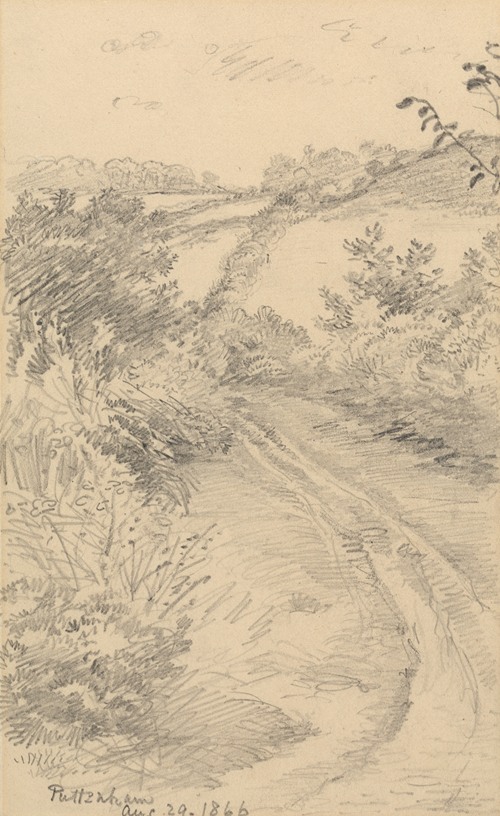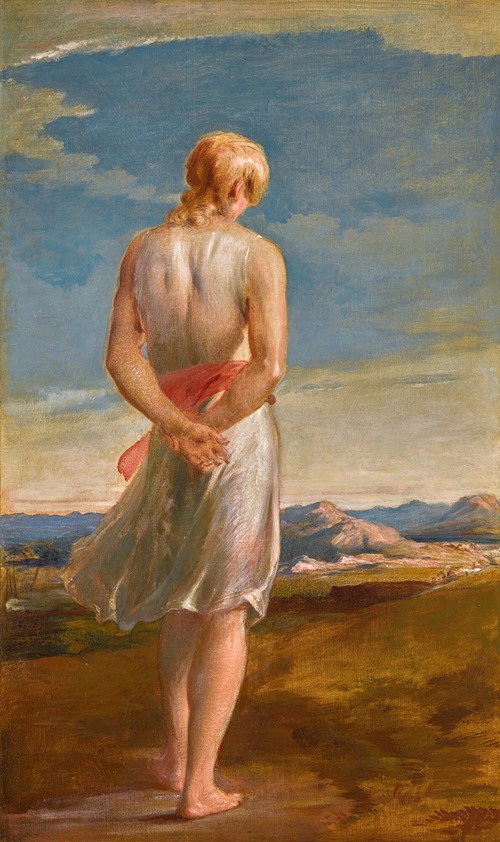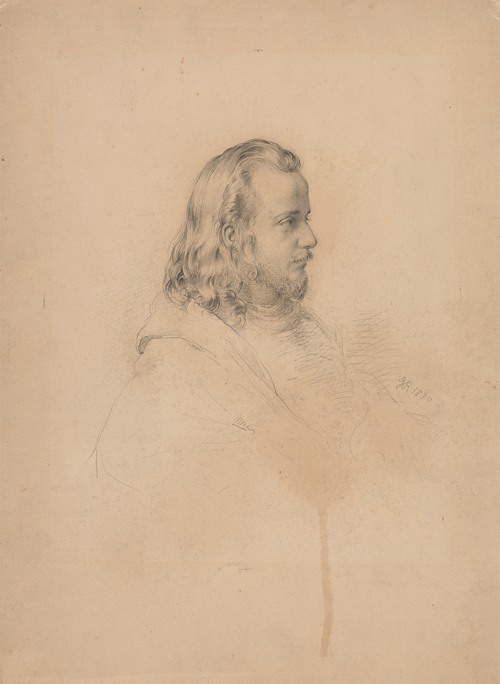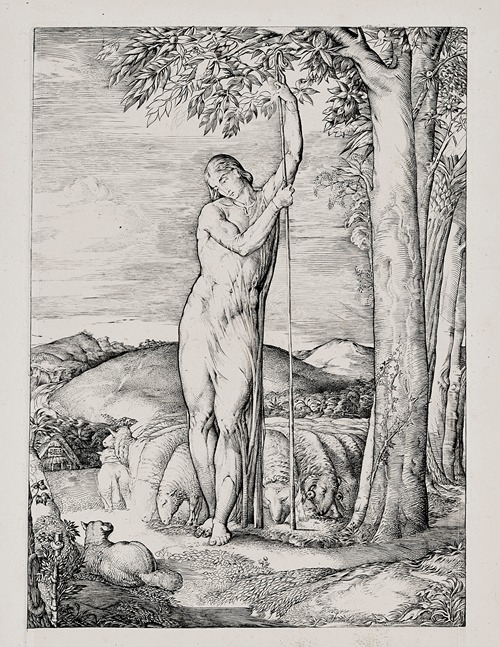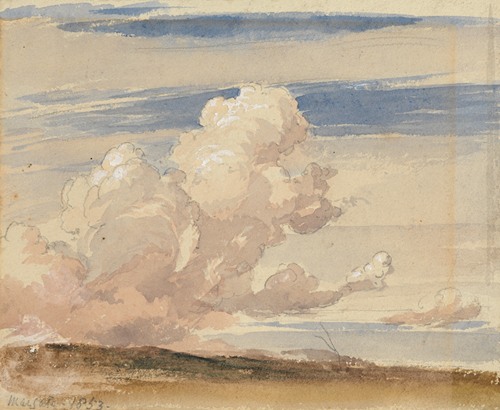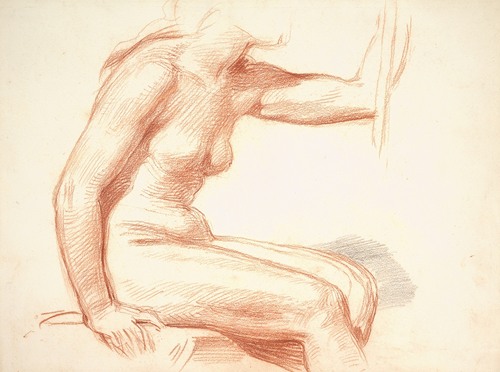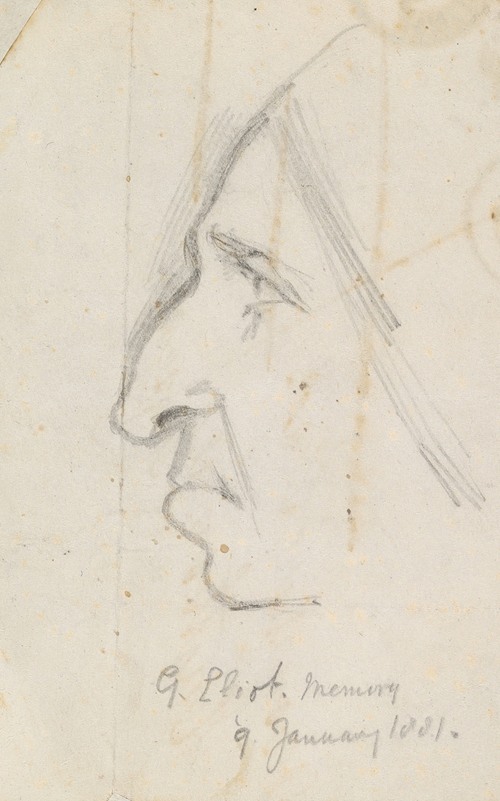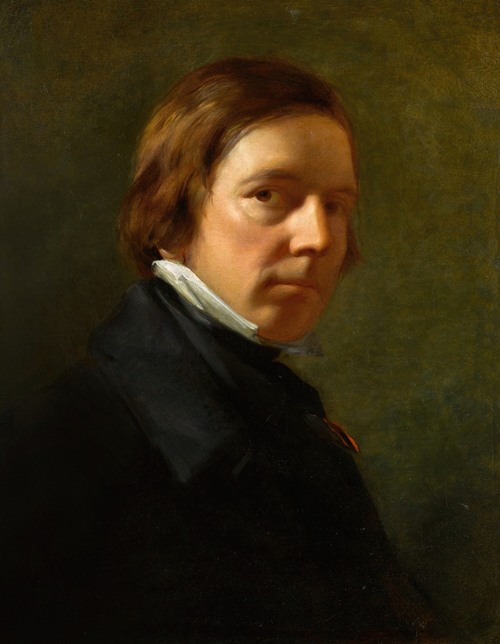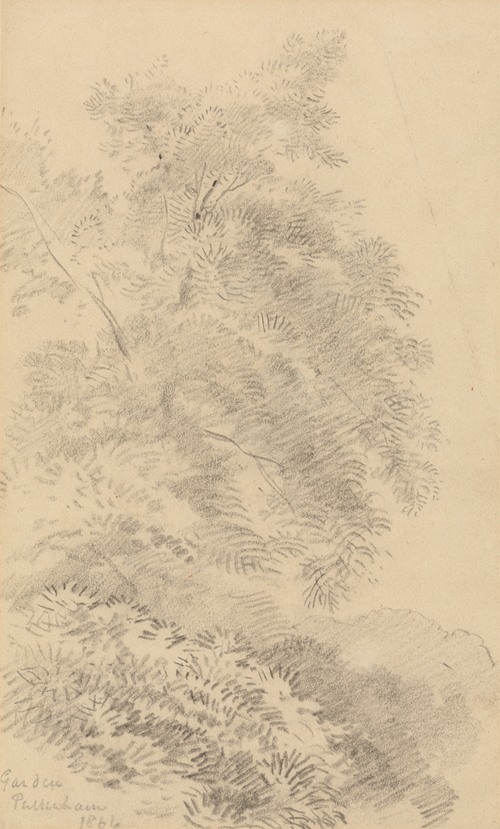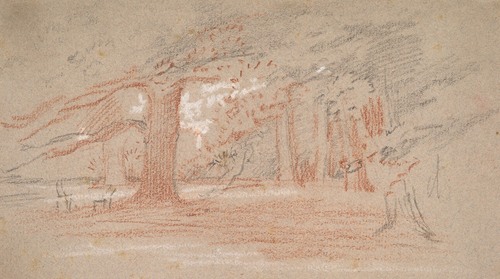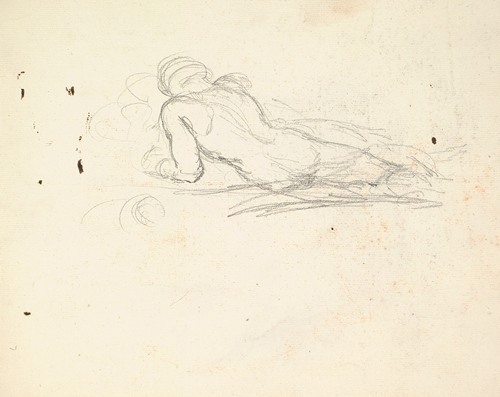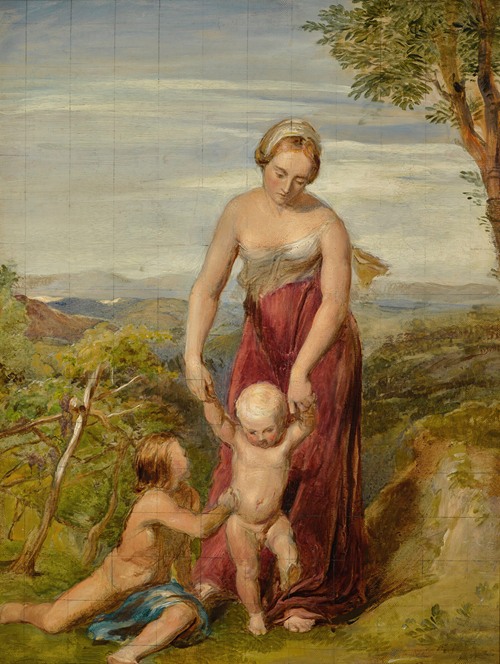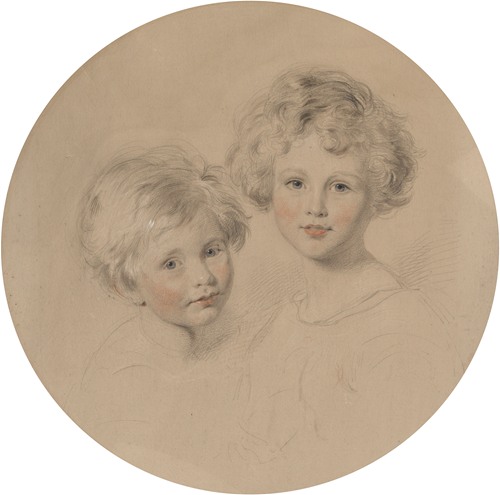
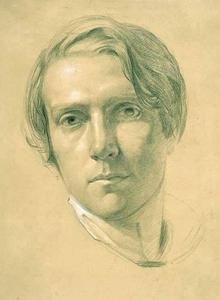
George Richmond RA was an English painter and portraitist. In his youth he was a member of The Ancients, a group of followers of William Blake. Later in life he established a career as a portrait painter, which included painting the portraits of the British gentry, nobility and royalty.
He was the son of Thomas Richmond, miniature-painter, and was the father of the painter William Blake Richmond as well as the grandfather of the naval historian, Admiral Sir Herbert Richmond.
A keen follower of cricket, Richmond was noted in one obituary as having been "an habitué of Lord's since 1816"
George was born at Brompton, then a country village, on 28 March 1809. His mother, Ann Richmond, came of an Essex family named Oram, and was a woman of great beauty and force of character. His brother Thomas Richmond was also a portrait artist.
One of his earliest recollections was the sight of the lifeguards marching to the cavalry barracks at Brompton on their return from the campaign of Waterloo, and he remembered when a lad walking for a mile beside the Duke of York, in order to sketch him for his father, from whom he received his first instruction in art. He went for a short time only to a day school kept by an old dame in Soho, and at fifteen became a student at the Royal Academy. Here he was much impressed by the personality of Henry Fuseli, then professor of painting, formed a friendship, which lasted a lifetime, with Samuel Palmer, and had as fellow-students and companions Edward Calvert, Thomas Sidney Cooper, esq., R.A., and Frederick Tatham, whose sister he married. Among other early friends was John Giles, Palmer's cousin, and a man of devout life and deep religion, who deeply influenced the literary taste, general culture, and religious views of his friends.
When Richmond was sixteen he met William Blake, of whom Palmer and Calvert were devoted admirers, at the house of John Linnell at Highgate. The same night Richmond walked home across the fields to Fountain Court with the poet and painter, who left on Richmond's mind a profound impression, 'as though he had been walking with the prophet Isaiah.' From this time till Blake's death, Richmond followed his guidance and inspiration in art. Traces of Blake's influence are seen in all Richmond's early works, and especially in 'Abel the Shepherd,’ and in 'Christ and the Woman of Samaria,’ exhibited at the Royal Academy in 1825. In 1827 he was present at Blake's death, and had the sad privilege of closing the poet's eyes and taking his death mask; he, his wife Julia, and a little band of young enthusiasts, of whom he was the last survivor, followed Blake to his grave in Bunhill Fields.
Along with Palmer, Calvert, Tatham and others he formed the Blake-influenced group known as "The Ancients". This influence faded in later life, when he produced relatively conventional portraits.
In 1828 Richmond went to Paris to study art and anatomy, the expenses of the journey being met from money earned by painting miniatures in England before leaving and in France during his stay. He spent a winter in the schools and hospitals, and saw something of the social life of the Paris of Charles X; at Calais he exchanged pinches of snuff with the exiled Beau Brummell.
On his return to England he spent some time at the White Lodge, Richmond Park, with Lord Sidmouth, who gave him much valuable counsel, and whose portrait by him in watercolour is now in the National Portrait Gallery. In 1830 his contributions to the academy comprised two poetical subjects, 'The Eve of Separation' and 'The Witch,’ from Ben Jonson's 'Sad Shepherdess,’ and three portraits. In 1831 he exhibited but one picture, 'The Pilgrim.'
He had now formed a deep attachment to Julia, a beautiful daughter of Charles Heathcote Tatham, the architect, and when her father revoked the consent he had at first given to their union, the young couple ran away, journeyed to Scotland by coach in the deep snow of a severe winter, and were married according to Scottish law at Gretna Green in January 1831. This act proved the turning-point of Richmond's career, and determined him to adopt portraiture as the readiest means of earning a living. Soon after the young couple had set up house in Northumberland Street, they were found and befriended by Sir Robert Harry Inglis, and it was at his instance that the portrait in watercolour of William Wilberforce, afterwards engraved by Samuel Cousins, was painted by Richmond; this picture, by its happy treatment of a difficult subject, and by the excellence of the engraving after it, achieved a worldwide success. There followed immediately many successful watercolour portraits, among which may be mentioned those of Lord Teignmouth, the Frys, the Gurneys, the Buxtons, the Upchers, and the Thorntons, all traceable to Inglis's friendly introduction.
In 1837 Richmond was forced to take a rest for the sake of his health, which had broken down through overwork and the loss of three children within a very short time. He went to Rome with his wife and their surviving child Thomas, accompanied by Samuel Palmer and his bride, a daughter of John Linnell. During his stay in Italy, which lasted about two years, he made studies and copies of many of the subjects on the ceiling of the Sistine Chapel, having a scaffolding erected so as to reach the vault; here he made the acquaintance of Cardinal Mezzofanti, of whose colloquial English he always spoke with wonder. Subsequently, he visited Naples, Pompeii, and the cities of Tuscany with Baring, for whom he painted a picture of 'The Journey to Emmaus.' While still in Rome he painted a picture of 'Comus,’ afterwards exhibited. In southern Italy, Richmond painted three portraits in oil on canvas that would help establish his reputation as the pre-eminent portrait painter of his generation: 'An Old Calabrian Shepherd' (Feb. 1838), 'A Neapolitan' (Mar. 1837) and 'Vine Dresser' (Apr. 1838).
In Rome Richmond made many valuable friends, including Mr. and Mrs. Gladstone, Henry Acland, the Severns, Thomas Baring, Lord Farrer, and John Sterling, and his house on the Tarpeian rock was a meeting-place for these young English travellers. John Sterling, in letters to Richard Chenevix Trench, writes of Richmond as the most interesting young artist he had met. In after years he was one of the original members of the Sterling Club. He returned to England in 1839, and resumed his practice as a portrait-painter, revisiting Rome, however, with his brother Thomas in 1840. Then, as related in 'Præterita,’ Richmond made the friendship of Ruskin, who later introduced him to Thomas Carlyle. About the same period Richmond travelled in Germany with John Hullah, alighting on Munich where he studied for a while under Peter von Cornelius.
Richmond was a member of 'The Club' (Johnson's), Nobody's Friends, Grillion's Club, to which he was limner, and the Athenaeum Club, London. A staunch churchman, he was intimate for years with all the leaders of the tractarian movement. He received honorary degrees from the universities of Oxford and Cambridge, was a fellow of the Society of Antiquaries, an honorary fellow of University College, London, and of the Royal Institute of British Architects, and a member of the Company of Painter-Stainers of the City of London.
In 1846 he was nominated by Gladstone to succeed Sir Augustus Wall Callcott on the council of the government schools of design, a post which he held for three years; and ten years later he was appointed a member of the royal commission to determine the site of the National Gallery, when he was alone in voting for its removal from Trafalgar Square to South Kensington. In 1871, and again in 1874, Gladstone pressed upon him to accept the directorship of the National Gallery, but the prime minister was unsuccessful.
In 1870 he bought Porch House, a 15th-century timber-framed house in the Wiltshire village of Potterne, near Devizes, and took advice from Ewan Christian on its restoration. The work included the addition of glass mosaic floors and encaustic floor tiles.
George Richmond died at his house, 20 York Street, Portman Square, where he had lived and worked for fifty-four years, on 19 March 1896, retaining almost to the end a clear and vigorous memory. He was buried at Highgate cemetery, and is commemorated by a tablet designed by his sons to be placed in the crypt of St. Paul's Cathedral, close to the graves of Wren and of Leighton. He left ten children and forty grandchildren.
